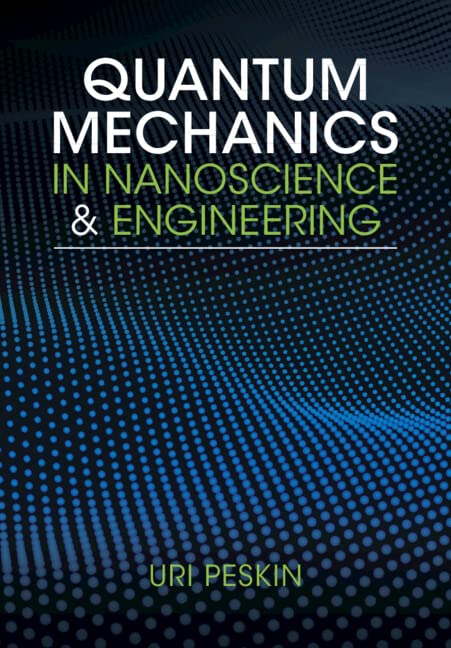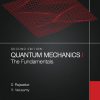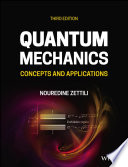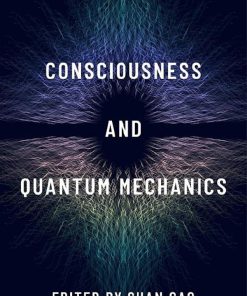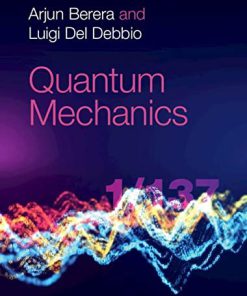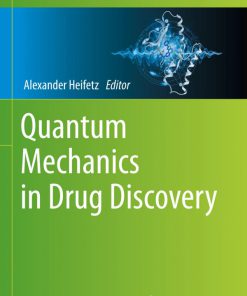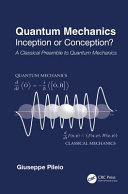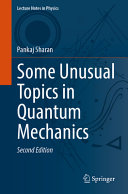Quantum Mechanics in Nanoscience and Engineering by Uri 9781108883245 1108883249
$50.00 Original price was: $50.00.$25.00Current price is: $25.00.
Quantum Mechanics in Nanoscience and Engineering Uri Peskin – Ebook Instant Download/Delivery ISBN(s):9781108883245, 1108883249
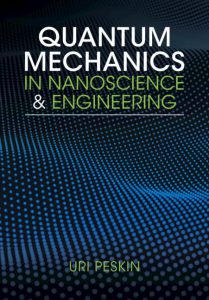
Product details:
- ISBN 10:1108883249
- ISBN 13:9781108883245
- Author: Uri
Quantum Mechanics in Nanoscience and Engineering
Table contents:
Preface: Who Can Benefit from Reading This Book?
1 Motivation
1.1 The Wave–Particle Duality and de Broglie Wavelength
1.2 Quantum Mechanics for Nanoscience and Engineering
2 The State of a System
2.1 Probability Densities
2.2 Proper Wave Functions
2.3 Normalization
3 Observables and Operators
3.1 Physical Observables and Operators
3.2 The Canonical Operators
3.3 The Angular Momentum Operators
3.4 Functions of Operators
4 The Schrödinger Equation
4.1 The Time-Dependent Schrödinger Equation
4.2 Time-Dependent Solutions
4.3 Stationary Solutions and the Time-Independent Schrödinger Equation
4.4 Interpretation of The Hamiltonian Eigenvalues
4.5 The Hamiltonian as a Hermitian Operator
4.6 Properties of the Stationary Solutions
5 Energy Quantization
5.1 The Energy Spectrum
5.2 The “Quantum Size Effect”
5.3 Energy Quantization for a “Particle-in-a-Box”
5.4 Energy Quantization for a “Particle-on-a-Ring”
5.5 Particles in Three-Dimensional Boxes: Quantum Wells, Wires, and Dots
6 Wave Function Penetration, Tunneling, and Quantum Wells
6.1 The Scanning Tunneling Microscopy
6.2 A Particle in a Finite Square Well Potential and Wave Function Penetration
6.3 The Schrödinger Equation for a Piecewise Constant Potential Energy
6.4 The Symmetric Double Well Potential and Quantum Tunneling
6.5 A Particle in Multiple Quantum Wells and Energy Bands
7 The Continuous Spectrum and Scattering States
7.1 The Continuity Equation and the Probability Current Density
7.2 Scattering in One Dimension
7.3 Degeneracy of Scattering States
7.4 Scattering from a Single Potential Barrier or Well
7.5 The Resonant Tunneling Phenomenon
8 Mechanical Vibrations and the Harmonic Oscillator Model
8.1 Molecular Vibrations
8.2 The Normal Modes of a Many-Particle System and the Harmonic Approximation
8.3 The Solutions of the Schrödinger Equation for the Harmonic Oscillator
8.4 The Infrared Absorption Spectrum of Diatomic Molecules
8.5 Dirac’s Ladder Operators
9 Two-Body Rotation and Angular Momentum
9.1 The Two-Body Problem with a Central Potential
9.2 Angular Momentum Eigenstates
9.3 The Rigid Rotor Model and Rotational Spectrum of Diatomic Molecules
9.4 Beyond the Rigid Rotor Model: Vibration–Rotation Coupling
10 The Hydrogen-Like Atom
10.1 Rydberg’s Formula
10.2 The Stationary States of a Hydrogen-Like Atom
10.3 Probability Density Distributions and Atomic Orbitals
11 The Postulates of Quantum Mechanics
11.1 A Summary of the Postulates
11.2 The Hilbert Space of Proper Quantum States and Dirac’s Notations
11.3 Extending the Vector Space to Include Improper States
11.4 Rationalizing The Postulates
11.5 The Continuous Position and Momentum Representations
11.6 The Vector Space of Multidimensional Systems
An Example: The Vector Space of a Particle in a Three-Dimensional Coordinate Space
11.7 Ensemble Measurements and the Uncertainty Principle
12 Approximation Methods
12.1 Perturbation Theory for the Time-Independent Schrödinger Equation
12.2 Perturbation Theory in Action
The Two-Level System
“Hybridization” of Atomic Orbitals
The Stark Effect
Envelope Function Approximations in Quantum Wells
12.3 The Variation Approach
The Variation Principle
Nonlinear Variation
The Method of Linear Variation
The Mean-Field Approximation
13 Many-Electron Systems
13.1 The Electron Spin
13.2 Spin and Identical Particles
13.3 The Electronic Structure of Many-Electron Atoms
Slater’s Determinant and Pauli’s Exclusion Principle
The Hartree–Fock Approximation
The Periodic Table of the Elements
13.4 Two-Electron Spin-Orbital Functions – Singlet and Triplet States
14 Many-Atom Systems
14.1 The “Chemical Space” and Many-Atom Systems
14.2 The Born–Oppenheimer Approximation
Breakdown of the Born–Oppenheimer Approximation
The Non-Crossing Rule and Conical Intersections
14.3 Covalent Bonds: the Hydrogen Molecular Ion, H[sup(2)][sup(+)]
14.4 Linear Combinations of Atomic Orbitals (LCAO) in Molecules
LCAO for Atom Pairs
Effective LCAO: Symmetry and Energy Compatibility
The Simple Hückel Model for Conjugated Polyene Molecules
14.5 Extended Systems and Energy Band Formation
The Bloch Theorem
LCAO for Extended Systems
Conductors and Insulators
15 Quantum Dynamics
15.1 Time-Independent Hamiltonians
The Two-Level System (a “Qubit”)
15.2 Unitary Evolution
15.3 Time-Dependent Unitary Transformations
The Interaction Picture Representation
The Heisenberg Picture
15.4 Quantum-Classical Correspondence
Gaussian Wave Packets
The Coherent State
15.5 Transition Probabilities and Transition Rates
15.6 Time-Dependent Perturbation Theory
A Constant Perturbation
Monochromatic Driving
16 Incoherent States
16.1 Mixed Ensembles
16.2 The Density Operator
16.3 Liouville’s Space
16.4 The Liouville–von Neumann Equation
16.5 Equilibrium States
The Canonical Ensemble
The Grand Canonical Ensemble
17 Quantum Rate Processes
17.1 Transition Rates between Pure States
17.2 The Emergence of a Rate Constant and Fermi’s Golden Rule
17.3 Thermal Rate Constants
18 Thermal Rates in a Bosonic Environment
18.1 The Spin-Boson Model
18.2 Charge Transfer in a Polarizable Medium
Nonadiabatic Charge Transfer
The Model Hamiltonian
Thermal Charge Transfer Rates
The “Golden Rule” Rate
The Semiclassical Limit and Marcus Formula
18.3 Radiation Absorption and Emission
The Model Hamiltonian
Thermal Absorption and Emission Rates
The “Golden Rule” Rates
The Semiclassical Limit
Vibronic Spectra
18.4 Förster Resonant Electronic-Energy (Exciton) Transfer (FRET)
The Model Hamiltonian
Thermal Energy Transfer Rates
19 Open Quantum Systems
19.1 Exact Reduced System Dynamics
Hilbert Space Projectors
Liouville Space Projectors
19.2 The Born–Markov Approximation in the System Hilbert Space
Irreversible Dynamics and Exponential Decay
19.3 The Born–Markov Approximation in Liouville Space
The System-Bath Hamiltonian and Nakajima–Zwanzig Projectors
The Redfield Equation
19.4 The Stationary Born–Markov Approximation
Population Transfer and the Pauli Master Equation
Pure Dephasing
19.5 The Dissipative Qubit
Absorption, Stimulated Emission, and Spontaneous Emission
Coherence Transfer and the Bloch Equation
Diagonal Coupling and Pure Dephasing
20 Open Many-Fermion Systems
20.1 The Fock Space
Fock Space Operators
Matrix Representations
20.2 The Second Quantization Hamiltonian
20.3 Fermi–Dirac Distribution
20.4 Impurity Models
20.5 Charge Exchange with a Fermion Reservoir
Reduced System Dynamics
Master Equation
The Equilibrium State
The Case of a Single-State Impurity
20.6 Nonequilibrium Fermion Systems
An Impurity Coupled to Several Fermion Reservoirs
Charge Transport through Nanoscale Conductors
Current through a Single-State Impurity
Transport through a Noninteracting Impurity
Index
People also search:
quantum mechanics in nanoscience and engineering
quantum mechanics in nanoscience and engineering pdf
quantum physics engineer salary
what is quantum well in nanotechnology
quantum physics and nanotechnology
You may also like…
Physics - Quantum Physics
Physics - Quantum Mechanics
Consciousness and Quantum Mechanics 1st Edition Shan Gao (Editor)
Physics - Quantum Mechanics
Quantum Mechanics 2nd Edition by Mahesh Jain ISBN 8120353382 9788120353381
Physics - Quantum Mechanics
Quantum Mechanics 1st Edition by Arjun Berera 9781108534468 1108534465
Physics - Quantum Mechanics
The Matrix Perturbation Method in Quantum Mechanics Francisco Soto-Eguibar
Physics - Quantum Mechanics
Quantum Mechanics in Drug Discovery by Alexander Heifetz 9781071602812 1071602810
Physics - Quantum Mechanics
Mastering Quantum Mechanics Essentials Theory and Applications Barton Zwiebach
Physics - Quantum Mechanics
Physics - Quantum Mechanics
Some Unusual Topics in Quantum Mechanics 2nd Edition by Pankaj Sharan ISBN 3031359623 9783031359620

